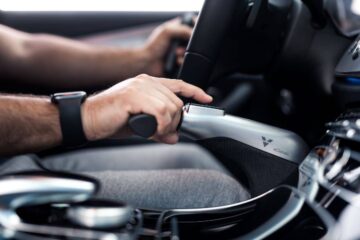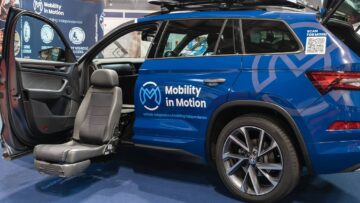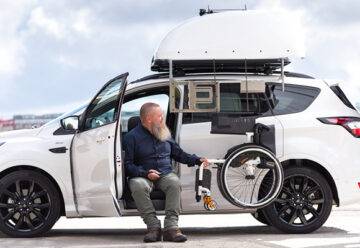How To Choose The Right Car Adaptations for Wheelchair Users
Car adaptations for wheelchair users increase the accessibility, safety and comfort of car journeys. In this article we highlight the different types of car adaptations available, tips to choose the right solutions for your needs and how to get them installed.
Why Car Adaptations Matter for Wheelchair Users
Unfortunately original vehicle manufacturers are still developing cars without accessibility in mind, despite some recent advancements. So car adaptations play a critical role to enable wheelchair users access to independent car travel.
This is especially evident as according to Transport for All’s Are We There Yet? 2022/23 report, 43% of people said they could not or did not drive, and are often unable to find someone who could. Around half of respondents said that they exclusively or primarily used the car as a passenger, with only 36% saying they mainly drove themselves and 17% stated that they couldn’t find a vehicle for their needs OR have difficulty getting into and out of the vehicle.
Types of Car Adaptations for Wheelchair Users
So what type of car adaptations are available to support wheelchair users with independent access to a car, and decrease these sharp statistics?
There are a wide range of adaptations available which are typically segmented into three main areas of a vehicle: driving, getting seated and storage.
Driving Aids

For those unable to use the vehicle’s standard pedals and functions, there are a range of driving aids such as hand controls, pedal extensions, left foot accelerators and steering aids that can be installed. These make driving accessible to a broader range of individuals, particularly wheelchair users who have limited mobility/dexterity or limb amputations.
Seating Adaptations

To achieve and support access into a standard car, either from standing or seated from a wheelchair, there are various solutions that aid in the transfer process including swivel seats, person hoists and transfer plates.
Accessible Storage Solutions

Many wheelchair users will know the struggle all too well of getting their device into a car, so there are also loading systems available that enable the easy lifting and loading of a wheelchair or mobility device into the car. Boot hoists, platform lifts and wheelchair roof boxes can be used independently by the user depending on individual capabilities, or by someone else travelling with them.
Factors to Consider When Choosing Adaptations
Whilst there are so many mobility adaptations available, it’s not a ‘one size fits all’ approach and there are multiple considerations when selecting the right adaptations.
First and foremost, everyone’s requirements and capabilities are unique so understanding the specific operation and benefits of each adaptation is a must to determine user suitability. Then you can explore if those adaptations are compatible with your vehicle and wheelchair. We would highly recommend an assessment with a vehicle adaptation expert such as Mobility in Motion who will be able to identify and advise on the most suitable solutions and confirm vehicle compatibility.
Further to this, particularly with driving aids, you may feel you need additional training and tuition to operate the adaptation confidently if you’ve never driven with those before.
Popular Car Adaptation Options for Wheelchair Users
Of course there are countless variants of adaptations to suit varying levels of mobility, but let’s take a look at some of the most popular adaptations for wheelchair drivers and wheelchair passengers.
A fully independent driving set up would most typically involve a transfer plate or swivel seat to enable an easy transfer from chair to driver’s seat. Then once seated, a wheelchair rooftop box is an ideal adaptation so you can lift, load and store your wheelchair ahead of your journey. To drive, push/pull hand controls are the most popular solution which transfers the function of braking and acceleration from foot pedals to hand, and is often accompanied with a steering aid to support the safe one-handed steering of the car whilst using the other for the hand controls.
As for a wheelchair passenger, an electronic swivel and lowering seat, wheelchair swivel seat or a person hoist offer the most supportive transfers from wheelchair to car seat. We would then expect to see a mobility device stowage system such as a boot hoist, to enable the driver to easily and safely lift and store the user’s wheelchair in the boot of the car.
Where to Find and Install Car Adaptations
Most car adaptations require a specialist installation by a trained engineer due to the nature of accessing the vehicle’s electrical systems and the adaptations must be attached securely. That being said, there are a few accessories available that can be easily fitted by yourself.
So it’s extremely important to speak with a professional vehicle adaptations company to advise you on vehicle compatibility and provide quality, reliable adaptations, securely fitted into your car.
At Mobility in Motion we offer a needs based assessment, select the right adaptations tailored to your individual needs and provide fuss-free installation and aftercare support. If you’d like to know more about our range of car adaptations for wheelchair users and how they can help you, contact our team of friendly mobility experts online or call us on 0800 288 4422.
What Are Adapted Vehicles? – for an overview of vehicle adaptations for disabled drivers.